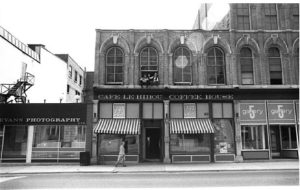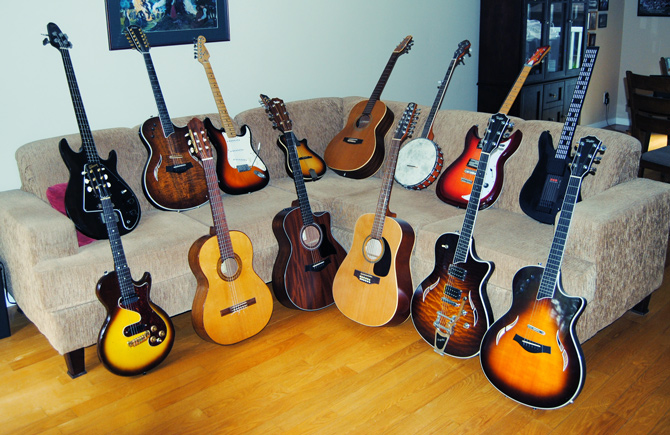This is the group I saw in 1968 at Le Hibou coffee house on Sussex Drive in Ottawa. It was one of the best performances I have seen in my life. They tore the roof off the place. Jesse Ed Davis went on to play with the likes of Eric Clapton, John Lennon, George Harrison and Bob Dylan, to name but a few.
It is difficult to overstate the importance of Taj Mahal’s eponymous first album (1968), which took traditional material by Blind Willie McTell (1898-1959), Sonny Boy Williamson (date of birth unknown – 1965), Robert Johson (1911-1938) and Sleepy John Estes (1899-1977), turning everything on its head with some of the most raucous and satisfying electric blues recordings ever made. In less than 24 months, Taj Mahal issued three more albums – Natch’l Blues (1968), the electric Giant Step and the decidedly rural De Ole Folks at Home (1969)
The genesis of my arrangement for “Light Rain Blues” follows the revival of folk music in the U.S. and of folk and Celtic music in Britain in the mid-20th century. It was at this time that I was teaching myself to play the guitar. The most prominent British guitarists involved in this revival were Davey Graham (1940-2008), Bert Jansch (1943-2011), John Renbourn (1944-2015) and Martin Carthy (b. 1941).
When American singer Bob Dylan arrived in London for the first time in 1962 he visited Martin Carthy and heard him perform in public. Dylan learned the traditional song “Scarborough Fair” from Carthy, which he later developed into his own song “Girl From the North Country”.At this time, many British guitarists experimented with different ways of tuning the guitar, creating “alternate tunings” by voluntarily detuning the strings to obtain tones not otherwise available. Martin Carthy, for example, created the alternate tuning EADEAE to better reach the tonalities of bagpipe music. Carthy called it his “pipe tuning”. About 15 years ago, I was trying out Carthy’s tuning and found an interesting melody which I recorded so as not to forget it. While recently rumaging through old recordings to inspire new projects, I came across that old file, entitled “EADEAE”. It consisted of 25 seconds of an interesting guitar melody, circular, repetitive and sedate, like a long rainy day, played in Carthy’s “pipe tuning”. That melody forms the basis of my arrangement of “Light Rain Blues”.
Richard Séguin – voice, acoustic guitar, mandolin, samples
To hear the song, click on the link below.
Copyright Disclaimer under Section 107 of the Copyright Act 1976 : allowance is made for « fair use » for purposes such as criticism, comment, news reporting, teaching, scholarship, education and research.



